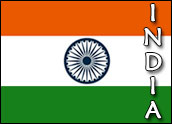
India’s Central Board of Direct Taxes (CBDT) issued a circular in May on the taxability of foreign companies that have outsourced work to India. Official notices have also been sent out to Indian IT outsourcing firms asking for information on the nature of services being provided by outsourcing organizations for their foreign clients.
The notices were issued under the authority of Section 142(1) of the Income Tax Act of India, which authorizes tax offices to make inquiries before making determinations on the amount of taxes due.
The CBDT is seeking to work out schemes for taxing work offshored to India. One of the strategies being developed is to tax the amount of income produced globally as a result of operations done in India. The CBDT is pursuing this strategy according to four types of distinctions.
Permanent Entity
The first distinction pertains to whether a foreign corporation has a “permanent entity” in India. The mere presence of a subsidiary in India might not qualify as a permanent entity. One factor that could qualify an Indian subsidiary as a permanent entity is if it concludes contracts on behalf of the non-Indian entity.
Western clients often seek to conclude joint contracts with the Indian and non-Indian sides of an outsourcing service provider, in part to have the Indian entity formally agree to abide by the confidentiality, quality-assurance and noncircumvention protections that Western clients would expect from any entity in India, regardless of ownership.
An alternative to binding the Indian entity would be for clients to examine the contracts and service agreements between the Indian and non-Indian entities of an outsourcing service provider to confirm that clients are adequately protected and can take independent action to preserve their rights in the event of a contract breach or misconduct by the Indian entity.
If a client does not have a direct contract with an Indian entity performing outsourcing work, that client might find that its options are limited in the event that the outsourcing process does not go according to plan.
Contracts executed directly with an Indian entity can and should provide U.S. clients and brokerage firms with rights to conduct onsite inspections and audits. Sometimes a foreign client or broker might only want to confirm that Indian employees are being paid properly, that incentive payments are being distributed correctly and that Indian personnel are not being discriminated against in hiring and promotion in a manner that would be inconsistent with a client’s antidiscrimination and HR policies.
In cases of management misconduct or incompetence, having a direct contract can give a client or broker the option of having the Indian entity assign that manager to another client’s work. This right to “REM out” or exclude contractor personnel gives the parties to a contract the option of continuing their business relationship.
However, in practice, the presence of one bad manager usually indicates larger problems throughout an organization, whereby termination of the entire outsourcing arrangement is often the client’s best option.
Core Revenue or Incidental Services
The second distinction that the CBDT is seeking to establish is between what it considers core revenue-generating services versus incidental services. Incidental services are those that the CBDT finds produce little or no revenues for the client, such as internal payroll processing. Core revenue generating activities include R&D and sales work, if conducted in India.
The CBDT will determine on a case-by-case basis which foreign clients of outsourcing firms in India have outsourced “incidental services” that, therefore, will be exempt from taxation. The CBDT issued an official circular in January that set out its policies regarding incidental versus core business activities.
Although this CBDT circular has the force of law, the word on the street is that the CBDT will withdraw it and replace it with a more refined version that takes into consideration tax treaties with other countries.
There is no sign that the CBDT will alter its method of making case-by-case determinations. A case-by-case tax determination made in different Indian settings can often produce radically different results, depending on the official involved.
More Managerial Effort Needed
At the end of July, unofficial signals from Indian Finance Minister P. Chidambaram were that the distinction between core revenue-generating services versus incidental services would be dropped in favor of an attempt to calculate the difference in prices paid to Indian subsidiaries versus what would be paid to service providers in the country of the client’s origin.
A formal announcement on how these calculations would be made is expected in the fall.
From the perspective of a client or broker of outsourcing services to India, Chidambaram’s proposal is problematic because it does not readily factor in for value added by a Western client in North America and which would be reflected in lower prices paid to Indian IT centers.
One provider of business-to-consumer outbound telemarketing programs in Colorado, for example, pays Indian centers 15 percent less on a pure performance basis than centers anywhere else in the world, because Indian centers require that client’s U.S.-based staff to spend more time providing training and quality assurance services to Indian call centers, and because working with Indian firms requires a greater level of effort by managers than if they were working with firms in Canada, Mexico or the Caribbean.
Many IT projects are unique, especially in R&D and software work. It is hard to develop alternate prices for unique projects.
The difficulty of price comparison is compounded by extreme cross-subsidization within many Indian firms, whereby other corporate divisions will often subsidize an IT operation in order to maximize their domestic Indian tax advantages. This makes it seem as if IT operations in India are cheaper than is frequently the case.
Even within U.S. firms, the U.S. entity will often pay for the Indian operation’s telecom and equipment costs, resulting in the appearance of low payments going to the offshore operation, but that will result in a higher tax bill in India under Chidambaram’s proposal.
Although labor in India might be less expensive, Indian call center agents might spend more time to resolve each call, and the number of calls per service-ticket resolution might be greater at an Indian center than at a North American one.
Costs in India are higher for telecommunications lines, telecom equipment, electricity and Western-trained managers. The actual cost savings of offshoring to India may initially be in the range of only 20 percent, despite the appearance of a 60 percent or greater savings on labor. As Indian institutions become stronger, the savings rate may increase over time, even as labor costs increase.
Whether Indian officials have the sophistication to implement this tax scheme equitably is an open question. Chidambaram’s family background is in the textile industry, where commonly accepted textile engineering methodologies can be used to compare prices and products from different factories in different countries.
Metrics for assessing IT services are also highly developed, but there is no commonly accepted means for conducting the types of price comparisons and analysis that Chidambaram’s proposal calls for.
Presumptive Tax Rates
The CBDT’s fourth distinction is in regard to whether presumptive tax rates will be used to assess the amount of taxes due by foreign firms. Presumptive principles are used elsewhere in India’s economy, with distorting effects. The amount of an architect’s fees is capped at a percentage of the total cost of construction, for example. This cap (3 percent at last reading) can severely limit the level of effort available for designing new, more efficient buildings.
India has used presumptive tax rates in the past, most recently in the financial year that ended March 31, 1998. Presumptive tax rates are being considered for IT outsourcing as a way to simplify the assessment and collections process.
The principle behind presumptive tax rates is that the profit gained by foreign firms is the greater of either of the following two options:
The CBDT’s approach to presumptive tax ignores risk and failure scenarios. At my firm, payments for offshoring work are often made on the basis of performance, particularly at the beginning of a business relationship with an overseas facility when very little is known about an offshore entity’s actual capabilities.
Pay for performance can be used for inbound order processing as well as outbound telemarketing. For inbound work, payment can be made according to the type of transaction completed, with different pay rates used for different types of transactions.
For young facilities, pure pay-for-performance contracts may be the only type of work that they can attract. Many facilities begin with outbound business-to-consumer pay-performance work, and then shift to outbound business-to-consumer pay-for-performance work. Some firms never break out of business-to-consumer work and may fail with some or all of the programs that they undertake.
Outsourcing projects may be considered to have failed if performance levels are too low for participants to break even. Under presumptive tax schemes, taxes would still be due on payments made in failed projects, exacerbating financial losses for everyone except the federal government in Delhi, also known as the “Centre.”
Presumptive tax rates will make it harder for new outsourcing service providers to become established in India because the costs for failure may appear to outweigh the rewards or potential for success. American clients can be expected to withhold the 4 percent presumptive tax amount from payments made to Indian facilities, rather than absorbing the 4 percent tax.
The alternative is, in effect, to compensate Indian providers at a 4 percent premium over what is paid to providers in other countries.
Anthony Mitchell, an E-Commerce Times columnist, has beeninvolved with the Indian IT industry since 1987, specializing through InternationalStaff.net inoffshore process migration, call center program management, turnkeysoftware development and help desk management.

















































Social Media
See all Social Media